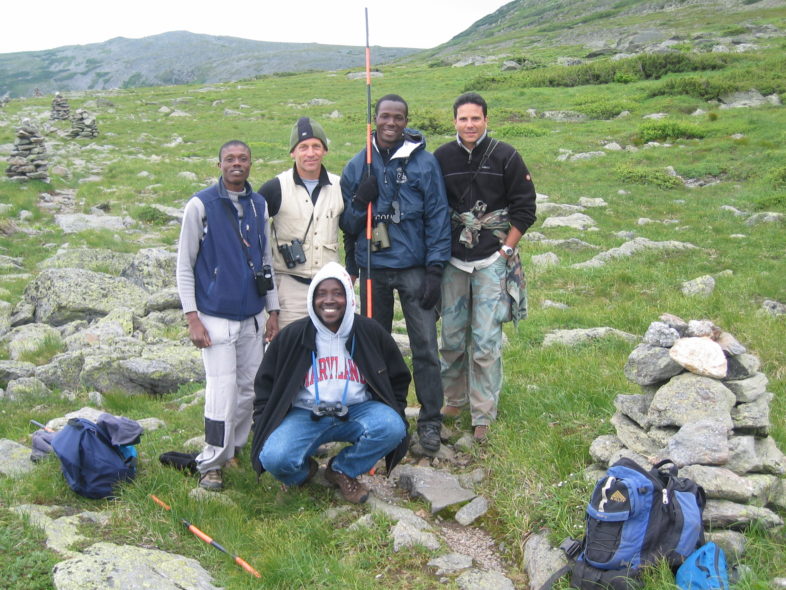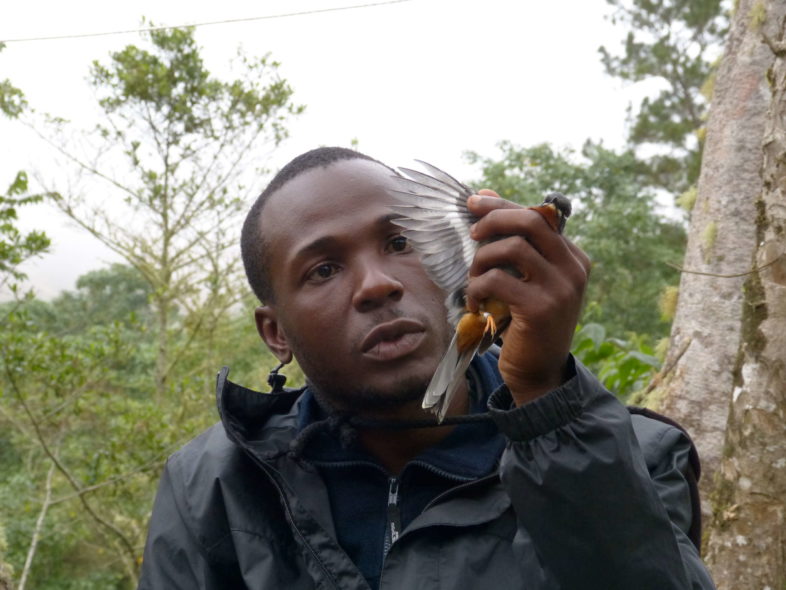
Anderson Jean, the 2022 recipient of Stanford University’s Bright Award, has a long history of friendship and collaboration with VCE. Undated photo courtesy of Anderson Jean
Longtime VCE colleague and close friend Anderson Jean has made his native Haiti more than a little proud. His choice as the 2022 recipient of Stanford University’s top environmental prize, the Bright Award, is a remarkable achievement by any measure. This prestigious annual award “recognizes unsung global sustainability heroes around the world” and is “presented to an individual or group for their outstanding work in preservation and sustainability.” Anderson will formally receive the award in an October ceremony at Stanford in Palo Alto, CA.
Jim Goetz and I first met Anderson in February of 2007, when he joined us on a field trip to Macaya National Park, a true biodiversity jewel in Haiti’s rugged Massif de la Hotte. Although we were sincerely impressed by his earnest enthusiasm, quietly affable demeanor, and ability to thrive under grueling field conditions, we couldn’t have foreseen then that he would become one of Haiti’s top conservationists. Now, in retrospect, we’re not the least bit surprised. That field experience with VCE was followed by a series of expeditions with Jim to Macaya and to La Visite National Park, where they searched for the enigmatic Black-capped Petrel. These helped steer Anderson on a path to become a leading conservation biologist in Haiti, working tirelessly with local communities to safeguard the country’s unique biodiversity. It also cemented his place in the VCE family and led to several other collaborative ventures with us.
One of those involved a memorable 3-week exchange to Vermont in July of 2008. Joined by Haitian colleagues Enold Louis Jean and Abdel Abellard and VCE’s Dominican collaborator Robert Ortiz, Anderson immersed himself in all things VCE. Visits to the Cornell Lab of Ornithology, Manomet, and the Harvard Museum of Comparative Zoology were sandwiched around intensive field work on Stratton Mountain, a two-day trip to the alpine zone of Mt. Washington, and even a live radio interview on Vermont Public Radio. Subsequent VCE-led field training workshops in the Dominican Republic and Haiti’s La Visite further expanded Anderson’s skill set and reinforced his commitment to conservation of Haitian biodiversity. It is a gross understatement to say that he’s never looked back!

Anderson Jean (holding mist net pole in back) in Mt. Washington’s Alpine Garden during a VCE exchange in July of 2008, with (counterclockwise from front) Abdel Abellard, Enold Louis Jean, Chris Rimmer, and Robert Ortiz. Photo by Kent McFarland.
Anderson’s accomplishments are truly impressive, especially given the challenges of working within Haiti, one of the world’s most taxing countries for conservation. In March of 2017 he co-founded the non-profit Action pour la Sauvegarde de l’Ecologie en Haiti (ACSEH), which loosely translates to “taking action to safeguard Haitian ecology.” One of very few grass-roots conservation groups in the country, ACSEH has become a leading actor in the discovery and protection of Haiti’s precious biodiversity. Reflecting Anderson’s own philosophy, ASCEH underscores the importance of Haitians’ hands-on involvement in local environmental issues.
At heart, Anderson remains a passionate conservation biologist. Over the past decade-plus, he has made ornithological history studying two of Hispaniola’s most rare, critically endangered birds—the Black-capped Petrel and Ridgway’s Hawk. First, he was part of a dedicated local field team that discovered several petrel nests on steep rocky slopes in eastern Haiti; this semi-colonial pelagic seabird comes ashore only to breed, restricts its activities to night, and may number no more than 2,000 individuals globally. Then, in August 2019, after 13 years of diligent searching, Anderson and ACSEH colleague Maxon Fildor found a pair of Ridgway’s Hawks—a Hispaniolan endemic that fell to 100 or fewer individuals in the early 2000s and was thought to be extirpated in Haiti—on Petite Cayemite Island. This rediscovery was tremendously energizing for Anderson, who this past summer documented 7 additional pairs, fueling hope for the species’ future in Haiti.

Two critically endangered Hispaniolan breeding species for which Anderson Jean has made remarkable field discoveries: Black-capped Petrel (left) and Ridgway’s Hawk (right). © Eladio Fernandez (left) and Pedro Genaro (right)
Anderson’s deep commitment to birds, community, and conservation is beautifully captured in a short Youtube video, narrated by him in Kreyol (but with subtitles)—Haiti, My Love, My Home. The film offers a moving tribute to Haiti and to the Black-capped Petrel, as well as a heartwarming exploration of how people and birds can live together. It nicely sums up Anderson’s approach to life, and his work. We at VCE are immensely proud of Anderson, honored to count him as a friend and colleague, and grateful to have played a small role in his extraordinary trajectory.

Anderson Jean inspects a banded Rufous-throated Solitaire during a VCE training workshop in La Visite National Park, Haiti in February 2013. Photo by Juan Carlos Martínez-Sánchez
